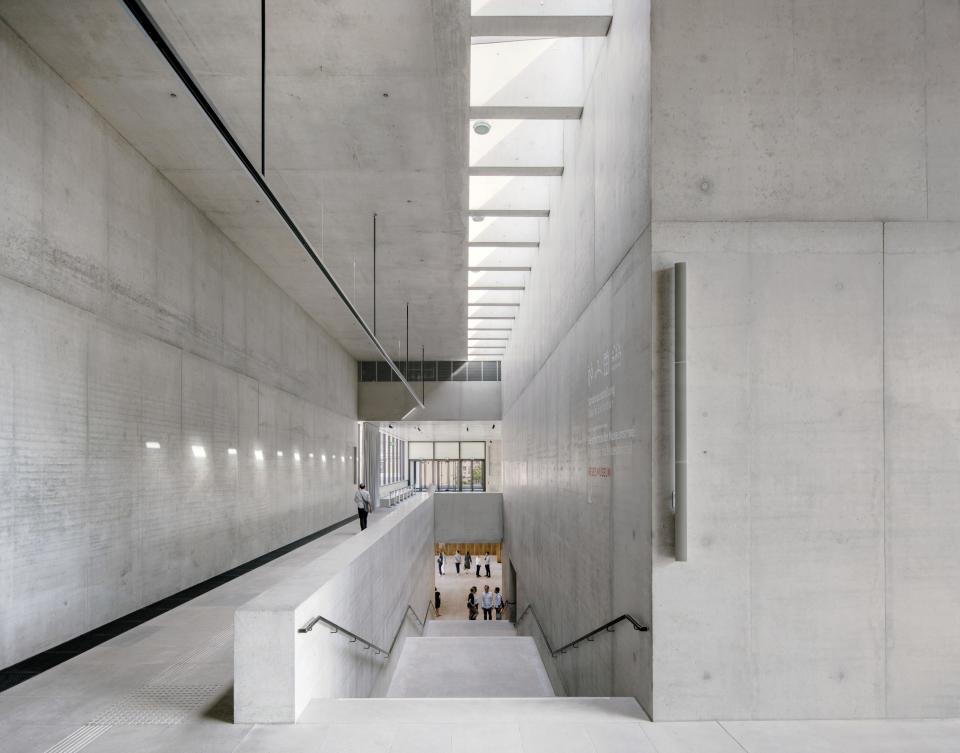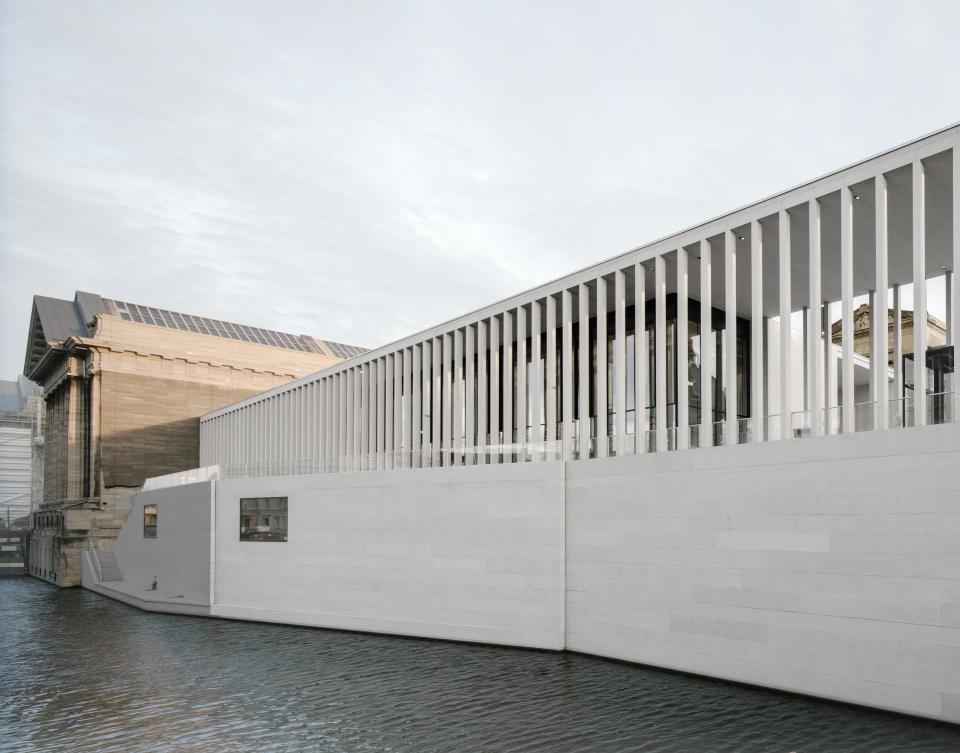David Chipperfield Explains His Design for Berlin’s James Simon Gallery
Approaching from the south, visitors to Berlin’s Museum Island will encounter a glistening stone mass rising from the Kupfergraben Canal. As if the Parthenon were bleached and shot through a slimming filter, the new $150 million James Simon Gallery by British architect David Chipperfield is both majestic and commanding, a hybrid of neoclassical and modern design.
Comprising five museums including the Pergamon, Museum Island was constructed piecemeal throughout the 19th and early 20th centuries, only to be bombed during World War II. Reconstructing the island has been an equally painstaking and controversial process, with both design styles and civic needs shifting throughout the decades.
As the gateway to Museum Island, James Simon Gallery is a core component of a master plan devised by Chipperfield and approved by the city in 1999. The plan will “stretch generations to come,” according to Michael Eissenhauer, director general of the National Museums in Berlin, and next phases include the construction of a series of underground tunnels uniting the museums. The Archaeological Promenade, as the tunnel network is named, will debut its first section when the gallery—now 20 years in the making—opens to the public in mid-July.

Although Chipperfield is a local favorite in Berlin (both the adjacent Neues Museum and Gallery building Am Kupfergraben across the canal bear his hand), the James Simon Gallery was not without snares. Following a mandatory design overhaul after widespread public criticism in 2006, the gallery’s final form is a defensive cultural temple that’s hoisted high off the ground and sits stoically overlooking its subjects on a stone plinth.
While elegant in their double-height slender shape, the gallery’s colonnades generate an unavoidable double image of the Nazi rallying grounds built by Albert Speer. “You put more than a couple columns in a row, and all of a sudden your building symbolizes something else,” explains Chipperfield in response to the similarity. “My client likes that I can get away with it, because I am a British architect, not a German one.”

After scaling the three flights of stairs up to the main entrance, visitors must pry open the gallery’s hefty doors in order to be admitted into a gentler kingdom indoors. The glamorous in-situ concrete foyer teems with glitzy accents, including marble ticket counters, upholstered leather benches, and clad copper ceilings. Drenched in light thanks to the floor-to-ceiling windows that run the length of the floor, this space encourages visitors to linger—an essential part of the building’s “programlessness,” according to Chipperfield.
“Museums were once closed-off boxes isolated from the world, but today’s museums must be dynamic social spaces,” reflects Chipperfield, who exerts total confidence in the gallery’s amorphous program in hindsight, though this was not always the case: “We were worried it would be a shopping list of miscellaneous functions.” But by pushing the core functions of the gallery—the auditorium, cloakroom, and temporary exhibition spaces—into the lower levels of the building, its sprawling entrance level and outdoor terrace become public spoils.
From the ticket counter, time-conscious tourists gunning for some face time with the Pergamon’s prize jewel, the iconic bust of Nefertiti (donated by cultural philanthropist James Simon, the namesake of this gallery), can head straight on for direct access to the museum through a comically small door. Seemingly excavated from the chiseled brickwork surrounding it, this entrance is a cheeky move by Chipperfield, who attests that the Pergamon is the “bully of Museum Island,” and its shrunken entryway is the just deserts.

Those with more time on their hands can amble along the terrace, which is sectioned off from the building’s interior by two layers of glass that cultivate a blurred sense of indoor and outdoor space. A staircase leads down from the terrace to the water, ending with a tantalizing stone “dock” that hugs the elegant angles of the building. Sadly, visitors will not be allowed onto this space, nor will boats be allowed to drop off museum visitors. With growing support for a plan to turn the canal into a giant swimming zone, blocking access to the water is an unfortunate decision for a city that is so innovative with its public space, and a disappointment for a gallery that aims to do the same.
Downstairs are the lavish cloakroom and gift shop ensemble, whose floors, ceilings, and desks are made from smoked oak and European walnut, giving off the air of an upscale Swiss chalet. From here, a mezzanine clad in perforated wood leads into the dramatic 300-seat auditorium, elegantly fitted into the concave space underneath the grand staircase. The wood trifecta continues, with the church bench-like seats, floor, and stage all melding together beneath a canopy of billowing concrete clad in supple oak. It’s a stunning space, both stately and intimate, and will no doubt serve as a great contribution to Berlin’s teeming cultural offerings.
In the basement, the shadow play and lightness of the upper levels disappears under the overwhelming gray concrete and the tunnel-like temporary exhibition space. The dimness is an unavoidable consequence of moving the building’s exhibition space, once considered the apex of the museum, underground. But in doing so, James Simon Gallery elevates its public space into a scintillating light. By dedicating such serious space for play, it encourages us to rethink what a museum is, and for whom it exists—even in spite of the dark history it might recall.
Originally Appeared on Architectural Digest

